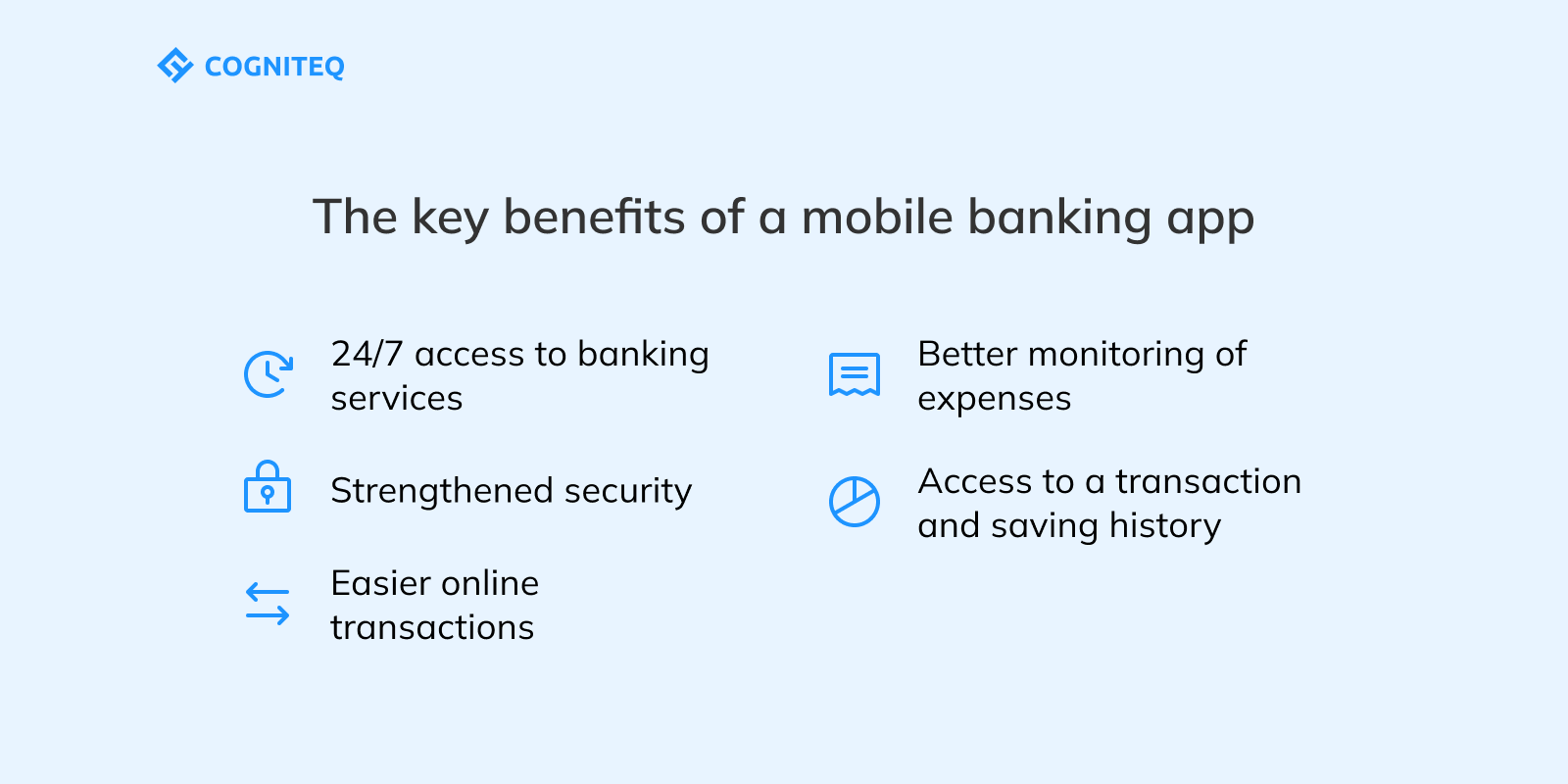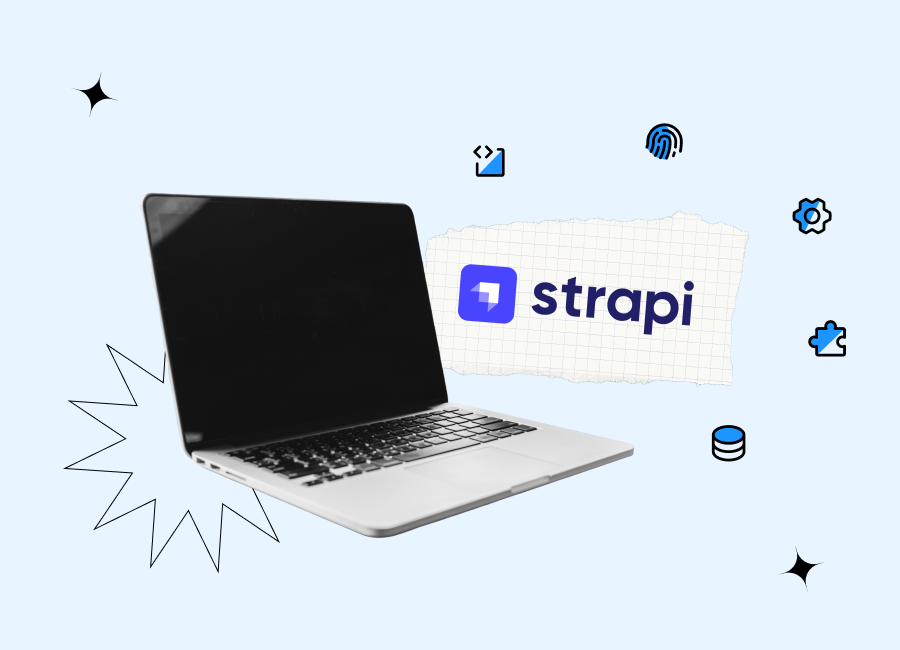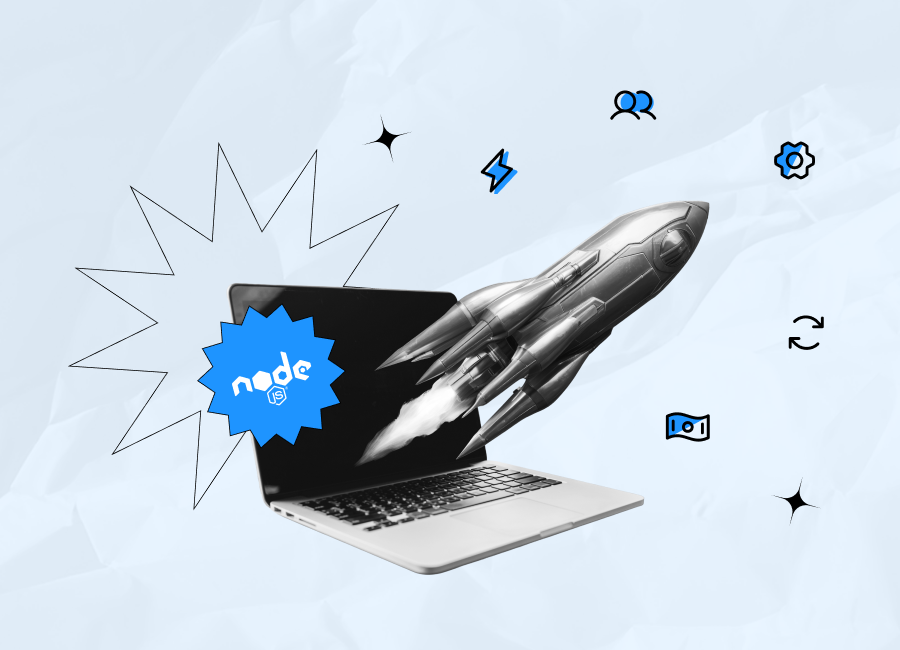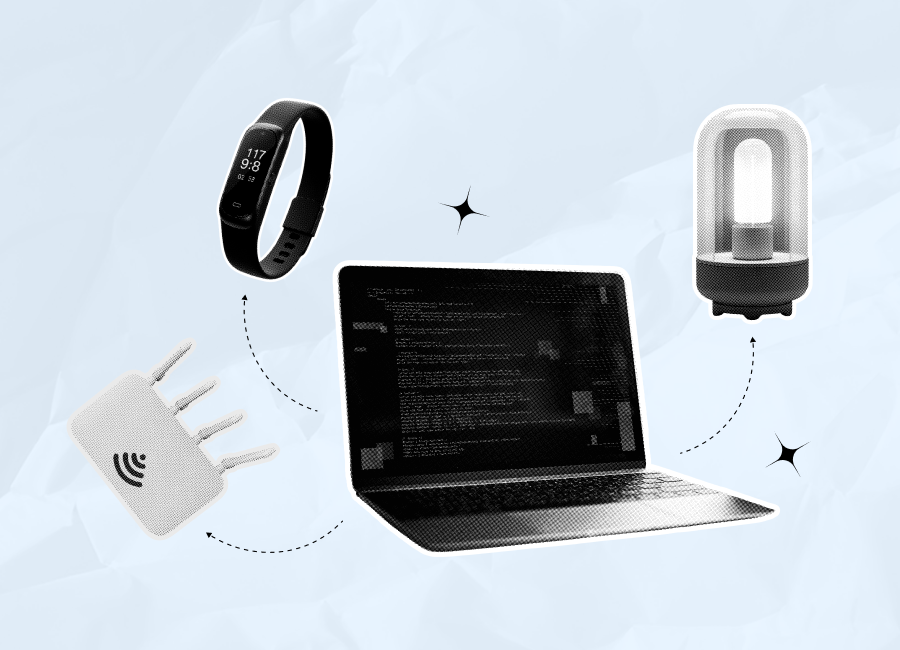Some years ago, when a person wanted to make a money transfer or needed to write an application for issuing a debit card, the only option was to visit a bank office. Now, such tasks are routinely done online, and often conveniently on a smartphone. A modern mobile banking app can significantly facilitate and streamline a lot of processes in a way that benefits both customers and bank employees. These solutions are a real must-have for banking institutions today. In this article, we’d like to talk about the functionality of such software products.
Mobile banking market: Overview
In many countries, the penetration rate of mobile banking is over 70%. The leader in this aspect is South Korea, where this figure in 2023 was 83%.

Mobile banking software is more popular than web solutions for online banking. This can be explained by the convenience that apps for smartphones and tablets offer to users.
What are the key benefits of a mobile banking app?

- 24/7 access to banking services;
- Strengthened security;
- Easier online transactions;
- Better monitoring of expenses;
- Access to a transaction and saving history.
However, to leverage all these advantages, it’s important to have an advanced, feature-rich solution that meets current industry standards. As a rule, such solutions have a full set of online banking features and some extra tools built specifically for mobile devices.
Below is a list of features of mobile banking software that you should consider if you are planning to develop your own product of this type.
Have an idea for a mobile banking app?
Let us help you transform it into an advanced solution that will provide users with absolutely unique experiences.
Bank account management
A good mobile banking app can completely change the way people manage their funds and accounts. All information related to their bank accounts can be available directly on their smartphones. As a result, they can track their account balance, monitor their savings, view their history of transactions over a chosen time period, and conduct money transfers. All this can be done at any time of day, and users don’t even need access to a PC or laptop, as is required with an online web banking app.
You can make bank account management more engaging by letting users set goals for saving and planning their budget. Stand-alone apps for budgeting do exist, but when you integrate such tools directly into a mobile banking solution, you provide users a more comprehensive understanding of their spending and income in real-time. It’s also possible to introduce categories for monitoring expenses such as food, online purchases, healthcare, trips, etc. This helps users allocate their funds much more efficiently.
Security measures
Security tools should be viewed as among the most important mobile banking features. These solutions always deal with huge volumes of sensitive data that needs to be properly protected. Today, hackers and other cyber criminals have a lot of sophisticated approaches to gaining access to users’ accounts and funds, and it’s vital to put in place measures to thwart these activities.
One of the most basic tools is secure user authentication. Two-factor authentication (2FA) is essential. What does that mean? First, users provide a password, and second, they verify their identity via another method. That could be a one-time code sent in an SMS, or biometric authentication, such as facial recognition or fingerprint. Those are among the most common options to boost security, but other methods may be employed, such as eye-scanning verification or voice recognition.
Though deploying powerful authentication tools is vital, you’ll also need to pay attention to the app’s performance and react in a timely way to any vulnerability before it becomes a real risk.
Integrating AI tools can also help in detecting security threats. ML algorithms can track all activity on the app and detect any unusual patterns. As soon as a deviation from the norm is identified, AI can take the required measures — for example, blocking the transaction and sending a notification to the tech support team.
QR code payments and confirmations
The popularity of QR codes continues to grow, as these codes can allow people to pay for their purchases quickly, without the need to take a credit card from a wallet or rely on NFC technology. A user needs only to scan a QR code with their mobile banking application to confirm the transaction.
It’s fast, convenient, and effort-free, while providing an additional security level for users’ funds.
Peer-to-Peer mobile payments
This functionality is a user favorite. It allows the user to transfer money to other people any time, with a couple of clicks. Paper money is fast losing its popularity, and many people today prefer to keep their funds in bank accounts and pay with cards or online rather than deal with cash.
What if your friend asks to borrow some cash but you don’t have any on you? You can withdraw it, but that’s not very convenient. If you both have an app with P2P functionality, it’s easy; you’ll be able to transfer funds from your account to your friend’s directly via the app. To do this, you need only his or her bank account or phone number (the required details may differ on various apps).
Independent P2P payment systems do exist, of course, launched by startups and non-banking organizations. But many people prefer to use tools provided by banks, as this option feels more secure than a third-party service. And standalone P2P apps tend to charge a fee for every transaction, while banks may offer the same service for free.
Personalization and customization
With the active development of AI and related technologies, users have come to expect a high degree of personalization from any service. When people see that the offered content, products, or services bring value and directly address their needs, they’re more likely to stay loyal to the company.
With mobile banking, you can deliver this value to users because your app, having access to their transaction history, can analyze their savings and spending patterns, and draw deep insights into their financial behavior. Based on the gained information, your application can prepare personalized financial recommendations and tips for users, helping them change their behavior so they save more, or drawing their attention to financial products that will be a good match for their needs.
It is also recommended that you allow users to customize the app’s interfaces, including home pages and dashboards. People should be able to change the layout, rearrange widgets, and hide some sections they don’t normally use.
One more feature that should be customizable is notifications. While people need to have the possibility of turning traditional notifications on and off, you can also let them set various personalized notifications in accordance with their preferences. For example, they might want to receive alerts for bill due dates, low balances, or any unusual account activities.
Intelligent chatbots
The quality of customer support is something people pay attention to when they interact with banks. With a growing number of clients and requests, it may be impossible to handle all of them manually. That’s when AI chatbots can help. They can provide human-like answers to users practically immediately, which not only reduces the workload for support agents but also minimizes waiting time. When a chatbot can’t deal with the received inquiry, it can address it to the relevant department, where managers will be able to help a customer.
ATM locator
This is a useful and much in-demand feature for a mobile banking app. It helps users quickly find the nearest ATM and check whether it’s available at the moment. Today, practically all mobile banking solutions have this tool, and we also recommend that you add it to your app.
For more advanced options, you can allow users not only to find ATMs in a particular area but also build the most optimal routes to them.
Gamification
You might think gamification has nothing in common with serious banking apps. But we think it’s worth thinking about adding some gamification elements while planning your banking app development project. Everyone, regardless of age and gender, likes games that are associated with the spirit of competition and the taste of victory.
What gamification elements can you offer to users of mobile banking products? There are several options. For example, you can provide users with various rewards and bonuses for demonstrating achievements in developing healthy financial habits. Users can set saving goals and get points for reaching the desired results.
Many banking apps have introduced gamified educational features. For example, you can utilize gamification to help your customers learn more about credit management and how to boost their credit scores. You can enrich your app with a credit simulator, special educational tools, and challenges that will demonstrate how different financial decisions can change their creditworthiness. But those are only a few of the possible examples. Practically the same tools can be built with a view to educating users about available investment options.
The onboarding process can also be gamified. You can offer quizzes, tutorials, and special tasks and challenges that will make the process more engaging and interesting.
And last but not least, don’t forget loyalty programs. Banks can use traditional gamification elements such as points, badges, and challenges to encourage people to interact with their services more frequently.
Analytics
We highly recommend you consider adding this feature to your application. By getting insights into users’ behaviors, preferences, and activities, a bank can shape a clear understanding of the most pressing needs of its customers. This information will help in adjusting existing products, services, and app features to bring the biggest benefits to users. The most advanced AI-powered analytics tools can also make predictions as to changing market needs, which will help prepare your banking institution for new trends.
Our expertise in banking app development
Our portfolio includes projects of a wide variety of types for various business domains, including mobile apps for the finance and banking industry. In this blog post, we’d like to mention our work on creating a mobile application for a major Kazakhstan banking institution.
Altyn-i is a mobile banking app for the iOS and Android platforms. The solution has a rich functionality that allows users to fulfill a lot of important tasks. For example, it has features for making transactions, managing bank accounts, sending applications for loans, managing savings deposits, etc. It was also necessary to build into the app functionality to provide high-quality customer support.

The main challenge for our team was to cope with tough deadlines set by our client. As the project involved developing a wide range of features, we suggested introducing them gradually. At first, we built an initial version of the app with core functionality and then started working on other tools.
Among the most interesting features were smart automatic payments and automatic subscriptions. The first tool allows users to indicate the amount and frequency of regular payments, or set limits for irregular ones. The second tool is able to track new bills (for example, for tax payments) and send notifications to users.
We also implemented powerful security measures and ensured high speed for transaction processing. This solution became the first mobile banking app in Kazakstan, and today it is being successfully used by the bank’s clients.
Conclusion
The technology world is dynamic. New achievements and innovations always set new trends for software development. That’s why, when you have plans for launching your own software solution, regardless of the domain, we recommend a careful study of the market before you start.
Mobile banking solutions are becoming more and more feature-rich and powerful. But you should keep yours simple to interact with, with a user-friendly design and straightforward processes.
If you’re looking for a professional team that can share its expertise in developing banking software and support you at any step of your project, our team can become your reliable partner. At Cogniteq, we are always open to cooperation. Don’t hesitate to send us your request.
FAQ
What is the best feature of mobile banking?
The range of mobile banking features that can be built with the help of modern technologies is wide. Nevertheless, each banking institution should choose functionalities based on the demands and requirements of their potential users. Bank account management, P2P mobile payments, and personal finance analytics tools are among the most popular features of such applications.
What are the requirements for a banking app?
At the top of the list, a mobile banking app should have outstanding security, because it deals with users’ sensitive data. A data breach can result in serious financial losses and reputational damage for banking institutions. Other requirements are a user-friendly interface, clear navigation, compliance with financial regulations, appropriate speed of transaction processing, and high-quality customer support.










































